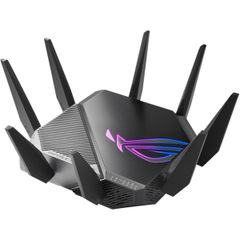|
Quantity
|
Out of stock
|
||
|
|
|||
Network hardware
Network equipment plays a key role in modern computer networks, which are an integral part of our daily lives. From home networks to corporate networks, without reliable network equipment it is impossible to ensure effective communication and data exchange.
Network equipment includes routers, switches, routers, bridges, and other devices.
Routers, or routers, are the most significant category of network equipment, and perform the function of routing data between different networks, subnets and end devices. They receive data from one network and forward it to another network, determining the optimal route for data transmission. Routers carry out data transfer based on IP addresses and use routing protocols such as OSPF, BGP, RIP and others. They also provide network security by controlling access to resources and filtering traffic, and also support virtual private network (VPN) functions.
Switches are another important category of networking equipment. They are designed to connect several network devices on a local network and provide addressable data transfer from one device to another. Switches can have different numbers of ports, depending on the needs of the network. They also support various communication protocols such as Ethernet, Fast Ethernet or Gigabit Ethernet, which ensures high data transfer speeds in the network.
Bridges are devices that connect different network segments, providing inter-network communication. They operate at the physical layer of the network and transfer data between network equipment using MAC addresses. Bridges allow devices from different network segments to communicate at the same level, improving network performance and efficiency.
Hubs (concentrators) are simple devices that allow the formation of local networks by connecting several devices through a direct physical connection. Hubs operate at the physical layer of the network and repeat and amplify the signal, allowing devices on the network to exchange data. However, hubs can be less efficient in terms of bandwidth and can create network conflicts when transferring data.
The development of networks and network equipment technologies allows the creation of complex and powerful networks capable of serving many users and devices simultaneously. Network equipment today has high bandwidth, allowing large amounts of data to be transferred at high speed. It also provides a stable and reliable connection between various devices and subnetworks, which is the basis for the functioning of modern information systems.
An important aspect of network equipment is its ability to provide network security and protection from unauthorized access. Network equipment is equipped with authentication and authorization mechanisms, as well as a firewall function that monitors and filters traffic on the network. This prevents unauthorized access to the network and protects important data from leakage or hacking.
Network equipment plays a key role in building efficient and reliable networks in the modern information world. It allows you to organize data transfer between computers, servers, Internet of Things devices and many other devices. Without network equipment, it would not be possible to exchange information, use Internet services, conduct video conferences, access cloud resources, and much more.








































